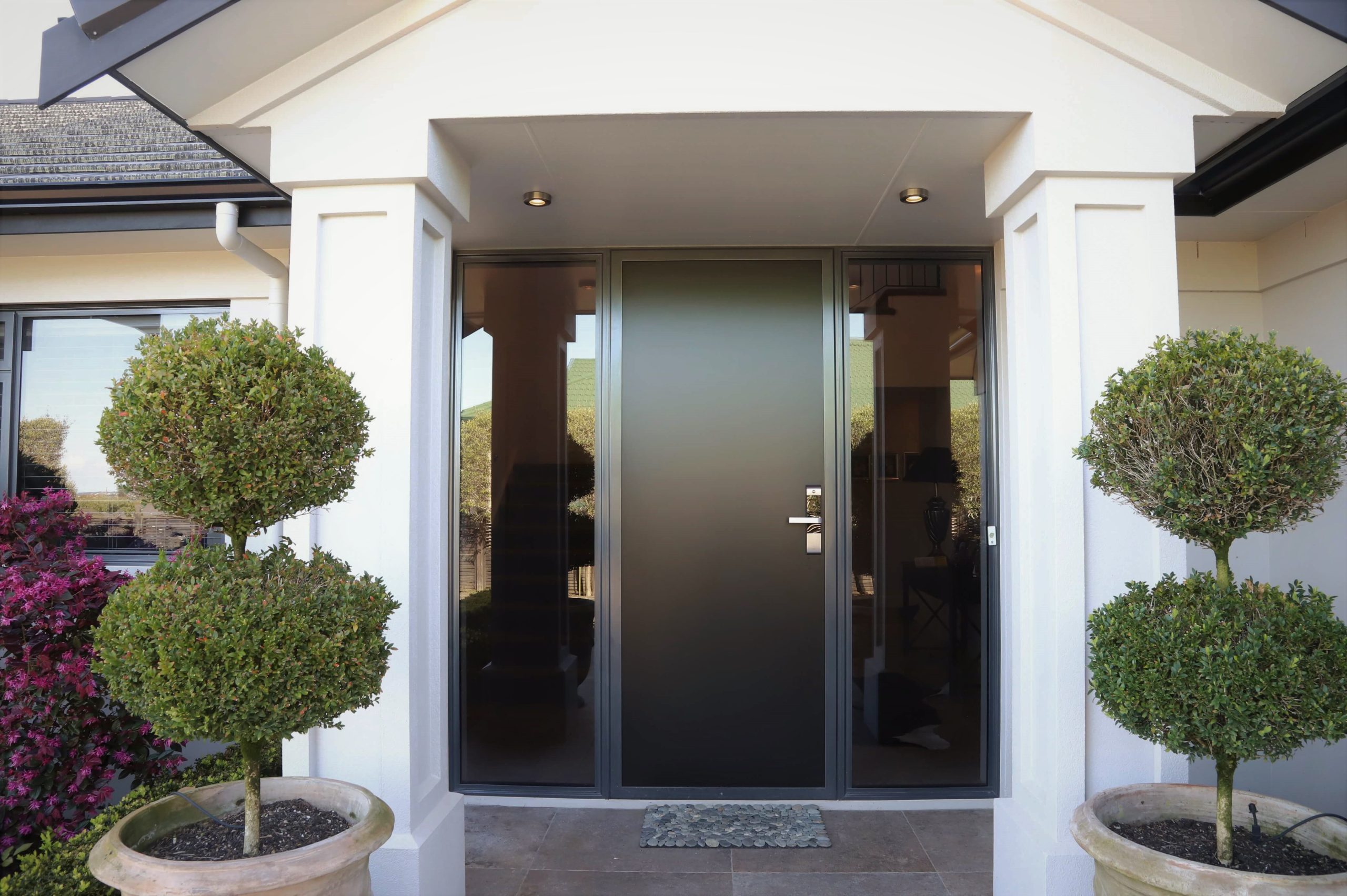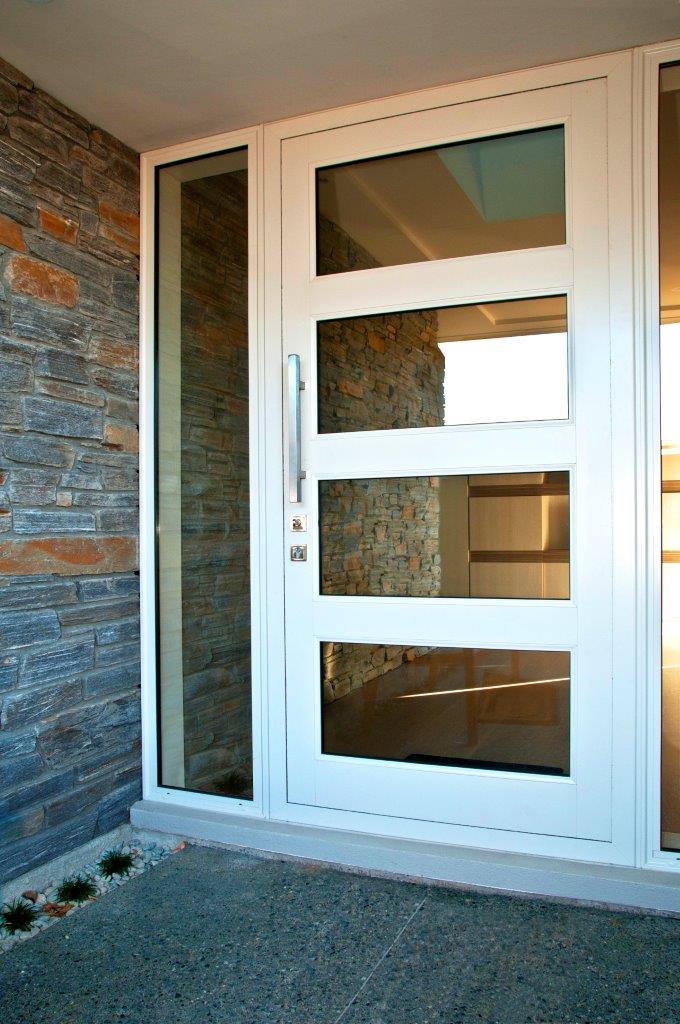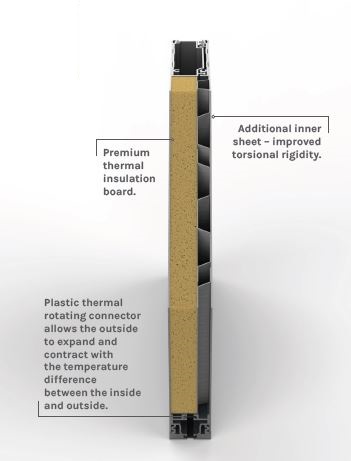Required thermal ratings on

Front Doors
Most front doors will need to have an r-rating that is the same as what the house is required to be (e.g. 0.37 from Nov ’22).
Why is this?
- Most jobs use the schedule method where:
- The door itself must meet the r-rating of the consented plans.
- A lower rated door cannot be used and then compensated elsewhere with higher-rated windows.
- This is the same for both unglazed and glazed front doors. A glazed door with an opaque section won’t comply only based on its glass rating.
Further explanation to our points above:
- A fabricator cannot normally compensate for a lower value door by higher rated joinery as it must be calculated.
- If using the calculation method, the architect/designer may allow for a front door with a lower r-rating and have it compensated for elsewhere. Normally, it is only them that can make that decision and specify it on the plans.
- Parkwood considers all front doors to have opaque sections and are therefore treated separately to the rest of the glazing. 1 lite, 2 lite, 24L, 25L etc may be considered non-opaque glazed doors, and are not normally used as front doors.
- Doors with glazing must be calculated to NZS4214 including the glazed and opaque sections.
- Therefore both the glazed section and the opaque section must comply.
- This may not apply to our stile and rail doors, where the stiles and rails could be considered as frames around the glazing.
- Demonstrating compliance for the glazing does not demonstrate compliance for the door.
Comment:
- The R-values in Table E.1.1.1 are representative construction R-values of vertical windows and glazing in doors typical to New Zealand housing. The values provided in this table are not representative of windows and doors in buildings other than housing.
- Table E.1.1.1 does not apply to opaque doors, or to opaque door panels.
- For doors with glazing, the R-values in Table E.1.1.1 include the effects of both the glazing and the frame, but not the effect of any opaque parts other than the frames around the glazing. For doors with both glazing and opaque panels, when using Table E.1.1.1, the opaque panel areas need to be treated separately from the areas with glazing (including frames around the glazing), with the R-value of the opaque panel areas determined in accordance with Paragraph E.1.1.2.
Councils are starting to use this form to ensure materials comply.

Thermtek FL
Exceptional R-rated Aluminium Door
The Thermtek FL has been designed to grow and shrink with the elements, with very minimal bowing. Testing this year, on Parkwood’s own test rig, showed maximum bowing of only 2mm with a temperature differential of 50 degrees. Traditional thermally broken doors generally struck above 6 millimetres under the same conditions.
The New Thermtek FL door comes with an R rating of 0.56 for a door 1980 x 860mm which will exceed the new building code requirements anywhere in New Zealand. This R rating will improve as the door gets larger.
Excellent insulation
Watch the video to understand how the patented technology in the Thermtek FL door stops thermal bowing whilst providing excellent insulation in your front door.

Duramax, high R-value front door range
Making it easy to achieve H1 energy efficiency acceptable solution H1/AS1.
These are ready and available for specification and purchase now.
All Duramax doors have a R-value (m²·K/W) of at least 0.5 – some as high as 1.16!
Their excellent thermal efficiency will contribute positively to the windows and doors building element in all climate zones, New Zealand wide.
- 10 year warranty in any weather.
- Smooth or woodgrain skin for painting any colour (Parkwood can pre-finish).
- The Polyurethane core of Duramax doors provides a strong thermal rating, giving your home a warm, comfortable atmosphere in the winter and cool and crisp in the summer.
- R value of at least 0.60 on unglazed doors (calculated as per ISO 10077-1 Third Edition 2017-6).
- Solid resin edges – clean and tidy which can be trimmed or rebated.

Timber Doors
In addition to their design, timber doors can have a different R-Value depending on what type of wood they are and how it has been treated. R-Values of softwoods are higher than those of hardwoods.
Among the timber Parkwood stocks Vulcan has the highest R-Rating, followed by Cedar, Pine and Ash which have a very similar rating to each other.








